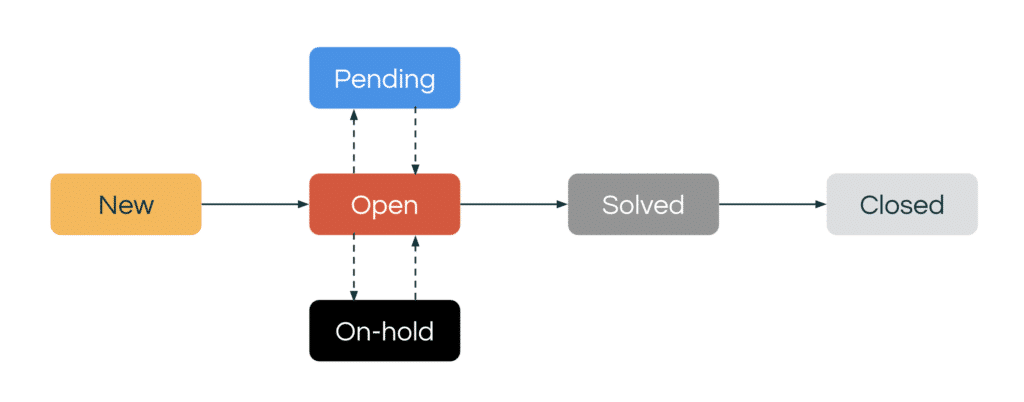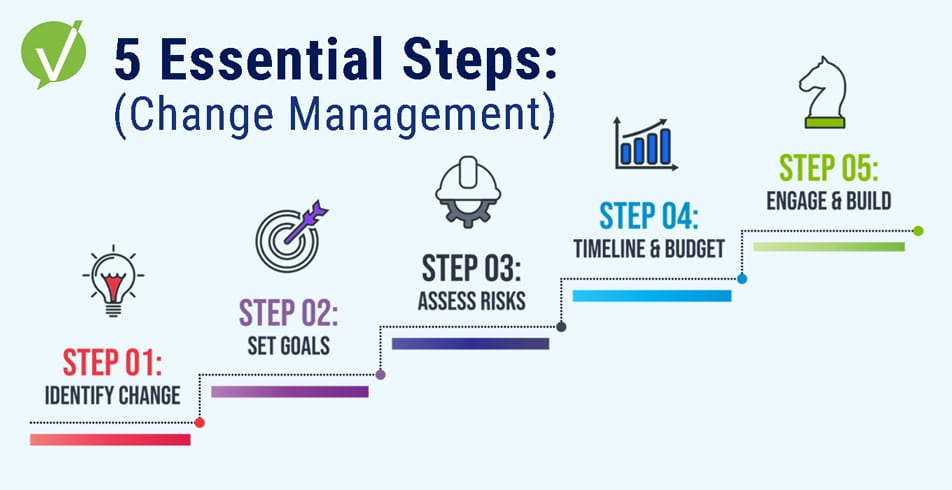Ticket Lifecycle Management: Enhanced B2B Ticketing System
Tracking a service department’s workflow and monitoring the progression of ticket-handling steps is essential to identifying potential customer service efficiencies. Disorganization within this process often leads to excessive response times. Company leaders that manage the ticket lifecycle effectively can maintain an accurate overview of resolved tickets, and identify the stages of the ticket lifecycle for those still in progress.
This kind of oversight prevents tickets from remaining unopened for too long or dropping off after an initial response. Businesses that emphasize quality ticket lifecycle management can provide their clients with more efficient service, and improve their own operations through an internal helpdesk ticketing system. To help businesses better understand this process, we will discuss:
- The ticket lifecycle
- The benefits of a ticket lifecycle management system
- How to get started
Let’s dive into each topic for more comprehensive understanding of ticket handling.
The Ticket Lifecycle
The ticket lifecycle refers to the process that a ticket takes, from origination all the way through resolution. Tickets take a non-linear journey, meaning that before resolution, a ticket may take some diverging branches along the path, or even pass back and forth between some steps.
Generally, though, the ticket lifecycle looks something like this:

In the most straightforward and simple circumstances, tickets are originated, opened, and resolved by the associate handling them. However, as we have mentioned, most tickets take more circuitous routes of communication between associates and clients before reaching a sufficient resolution.
This is where the “pending” and “on-hold/postponed” tags come in.
A “pending” ticket has been opened and received a reply, but the user has not yet confirmed that the problem is solved. Perhaps they have returned with another question, expressed that the issue remains, or simply have not responded at all.
An “on-hold” or “postponed” ticket is one that has been set aside until a certain condition is met, usually due to extenuating circumstances. This usually involves some level of action or information from a third party, which is why these tickets are tagged as “on-hold” instead of “pending” to clarify that they require no current action.
The Benefits of a Ticket Lifecycle Management System
Using a comprehensive ticket lifecycle management system is the best way for businesses to improve their ticket management process. By using an end-to-end platform, business owners can ensure they have the ability to route, tag, monitor, and take action on support tickets—all through a single interface. The benefits of a quality software system include:
- Faster ticket response times
- Better organization for a higher volume of support tickets
- More informed support responses
- More personalized support experience for clients and staff
- Higher customer satisfaction
All of these outcomes make things easier for end users and support staff alike. Automating logistics reduces bloat in support staff workload, freeing up more time to provide clients with a personalized, human touch for every response. This makes their jobs easier and increases the quality of their resolutions.
Software systems provide more far-reaching benefits than simple automation. They also provide a clean, organized interface that facilitates ticket tracking and interaction, finding contact information, adding notes to client files, and monitoring average response times. These tools help client-facing staff do their jobs, and help management track important KPIs to keep their support departments running optimally.
Improve Ticket Management with Vivantio
While each of the benefits listed in this article works wonders for businesses, they won’t help if managers choose a platform that doesn’t offer all of the necessary features. Vivantio offers a cutting-edge customer service software platform that offers everything listed and more, including:
- Endless integrations to make implementation easy
- Automatic ticket routing to ensure every ticket gets to the proper agent
- Workflow designer tool that allows managers to customize the framework of their CS operations without any technical knowledge required
- White-label service portals so businesses can maintain a cohesive brand throughout the service process
- A holistic view of each client to ensure that no agent is left without vital information
For businesses looking to bring their customer experience into the modern age, Vivantio is a no-brainer option.













